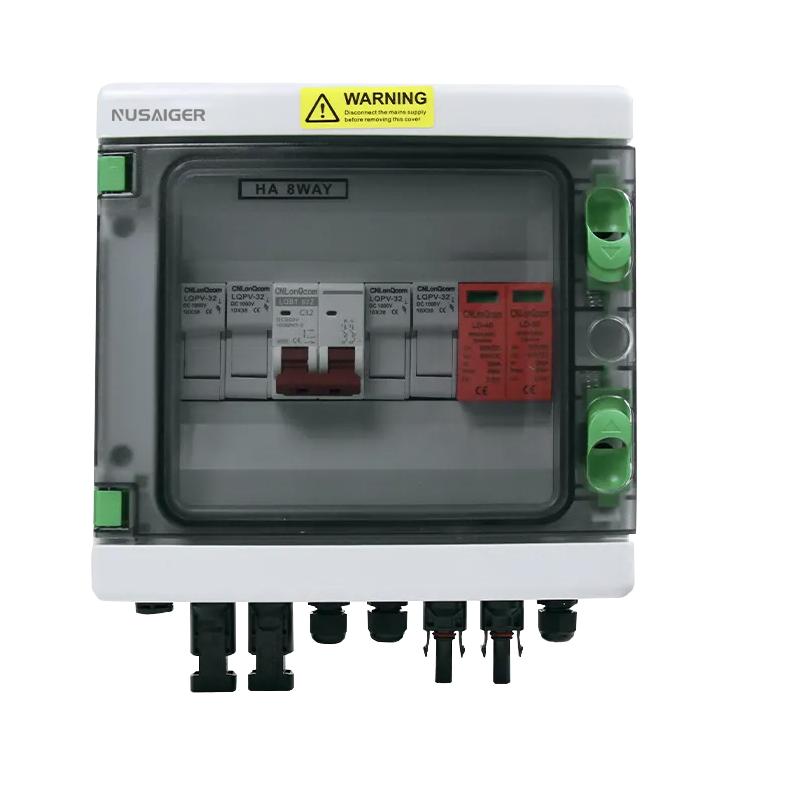Top 10 Mistakes to Avoid When Installing a PV Combiner Box
As solar energy becomes increasingly popular for residential and commercial applications, the importance of proper PV system installation cannot be overstated. Among the many components of a photovoltaic system, the PV combiner box plays a central role in managing multiple solar panel strings, enabling efficient monitoring and protecting against system faults. However, even experienced installers can make critical errors during installation that compromise the safety, performance, or lifespan of the combiner box and the system as a whole.
1. Choosing the Wrong PV Combiner Box for Your System
Not all PV combiner boxes are created equal. Choosing a box that is not rated for the system’s voltage, current, or number of strings can lead to overheating, blown fuses, or electrical fires. Always calculate your expected input/output parameters and select a box with appropriate surge protection, busbars, terminal blocks, and DC fuses.
2. Poor Weatherproofing and Outdoor Installation
PV combiner boxes are frequently installed in outdoor environments exposed to sunlight, wind, rain, and dust. Using a box that lacks a proper IP rating (e.g., IP65 or higher) or failing to seal cable glands can result in moisture ingress, corrosion, and eventual component failure.
3. Improper Grounding
Grounding the PV combiner box is not optional—it’s critical. An improperly grounded system can lead to electrical shocks, equipment damage, and safety code violations. Use a properly sized grounding wire and ensure all metallic parts are securely bonded.
4. Overloading Strings Without Accounting for Amperage
Installers sometimes connect too many modules to a single string or fail to account for increased current during high irradiance days. This can stress the components inside the combiner box, resulting in heat buildup and degraded performance over time.
5. Loose Cable Terminations
One of the most common issues in solar installations is loose cable terminations. These cause arcing, voltage drops, and fire hazards. Use torque wrenches and always double-check tightness to prevent such dangerous situations.
6. Mixing Incompatible Components
Solar PV systems are often assembled using parts from different manufacturers. When DC fuses, disconnect switches, surge protectors, or terminals are incompatible with the combiner box, reliability and warranty claims can be jeopardized. Always follow the manufacturer’s component compatibility guidelines.
7. Poor Cable Management and Conduit Routing
Cables entering or exiting the combiner box should be routed neatly and protected against UV damage and mechanical stress. Poor cable management can lead to insulation failure or short circuits.
8. Lack of Surge Protection Devices (SPDs)
Without built-in or added surge protection, PV combiner boxes are vulnerable to lightning strikes and transient voltage spikes. Ensure SPDs are included and meet applicable standards such as UL 1449 or IEC 61643.
9. Inadequate Labeling and Documentation
Every wire and component inside the combiner box should be clearly labeled. Missing or incorrect labels create confusion during maintenance and troubleshooting. Detailed system documentation should accompany every project.
10. Skipping Thermal Testing and Commissioning
After installation, some installers skip critical thermal imaging and commissioning procedures. These steps help identify hot spots, poor connections, or underperforming strings. Never skip them; they’re essential to system health and safety.
Conclusion
Installing a PV combiner box correctly is crucial to the long-term safety and reliability of your solar power system. Avoiding these 10 common mistakes will ensure your system meets regulatory requirements, operates efficiently, and remains safe over its intended lifespan. For more in-depth guidance, consult certified solar electricians or follow your regional installation standards such as NEC 690 (U.S.) or IEC 60364 (International).
If you’re looking for a reliable, weather-resistant, and pre-tested PV combiner box solution, contact our team today. We offer customizable combiner boxes tailored to your project requirements.



